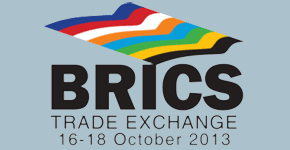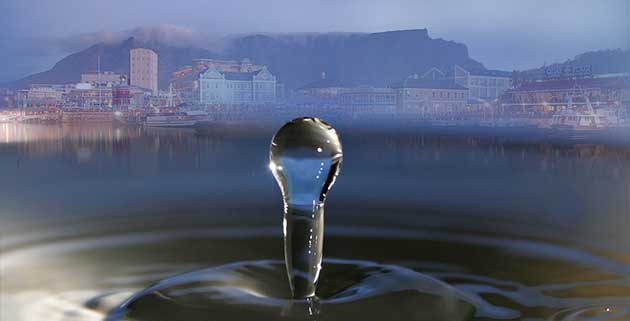V&A Waterfront Re-imagines History
Imagine forty-two 33 metre high concrete tubes each with a diameter of 5.5 metres, with no open space to experience the volume from within. Imagine redesigning this into a functional space that will not only pay tribute to its original industrial design and soul, but will become a major, not-for-profit cultural institution housing the most significant collection of contemporary art from Africa and its Diaspora.

The brief given to Heatherwick Studio was to reimagine the Grain Silo Complex at the V&A Waterfront with an architectural intervention inspired by its own historic character. The project called for a solution that would be unique for Africa and create the highest possible quality of exhibition space for the work displayed inside.
The V&A Waterfront’s challenge to repurpose what was once the tallest building on the Cape Town skyline caught the imagination of internationally acclaimed designer Thomas Heatherwick and his innovative team of architects.
This was a chance to do more than just appropriate a former industrial building to display art, but to imagine a new kind of museum in an African context.
The R500-million redevelopment project, announced in November 2013 as a partnership between the V&A Waterfront and Jochen Zeitz will retain and honour the historic fabric and soul of the building while transforming the interior into a unique, cutting-edge space to house the Zeitz Museum of Contemporary Art Africa (Zeitz MOCAA). Considered the most extensive and representative collection of contemporary art from Africa, the Zeitz Collection has been gifted in perpetuity to this non-profit institution by ex-Puma CEO and Chairman, Jochen Zeitz. The collection will be showcased in 9,500m2 of custom-designed space spread over nine floors, of which 6,000 m2 will be dedicated exhibition space.
Heatherwick Studio, based in London, is recognised internationally for projects including the UK Pavilion at the 2010 Shanghai World Expo, The London 2012 Olympic Cauldron, the New Bus for London and the redevelopment of Pacific Place, a 640,000m2 complex in the centre of Hong Kong.
For the Zeitz MOCAA project, Heatherwick Studio will partner with three local delivery partners; Van Der Merwe Miszewski (VDMMA), Rick Brown Associates (RBA) and Jacobs Parker. Jacobs Parker will be the lead designer for the Museum fit out.
David Green, CEO of the V&A Waterfront, said, “Thomas Heatherwick understood how to interpret the industrial narrative of the building, and this was the major breakthrough. His design respects the heritage of the building while bringing iconic design and purpose to the building. Under his mentorship as lead designer, local partners stand to gain not only in experience but insights and knowledge sharing.’’
Green explains that from the outset, the V&A Waterfront knew they wanted to repurpose the Grain Silo Complex, disused since 1990, in a manner that would combine ingenuity, resourcefulness and beauty. By preserving and representing the building as a centre piece for the District and as a cultural institution, its character and personality will be honoured.
The key challenge has been to preserve the original industrial identity of the building, which is heritage listed, and to retain choice pieces of machinery to illustrate and maintain its early working character. Heatherwick Studio has met the brief with characteristic boldness and creative flair. The final design reveals a harmonious union of concrete and metal with crisp white spaces enveloped in light.
Explaining the design, Thomas Heatherwick said, “How do you turn forty-two vertical concrete tubes into a place to experience contemporary culture? Our thoughts wrestled with the extraordinary physical facts of the building. There is no large open space within the densely packed tubes and it is not possible to experience these volumes from inside. Rather than strip out the evidence of the building’s industrial heritage, we wanted to find a way to enjoy and celebrate it. We could either fight a building made of concrete tubes or enjoy its tube-iness”.
Speaking on the challenges of this project, Heatherwick explained that “unlike many conversions of historic buildings which have grand spaces ready to be repurposed, this building has none. The project has become about imagining an interior carved from within an infrastructural object whilst celebrating the building’s character.”
The solution developed by Heatherwick Studio was to carve galleries and a central circulation space from the silos’ cellular concrete structure to create an exceptionally spacious, cathedral-like central atrium filled with light from an overhead glass roof. The architects have cut a cross-section through eight of the central concrete tubes. The result will be an oval atrium surrounded by concrete shafts overhead and to the sides. Light streaming through the new glass roof will accentuate the roundness of the tubes. The chemistry of these intersecting geometries creates an extraordinary display of edges, achieved with advanced concrete cutting techniques. This atrium space will be used for monumental art commissions not seen in Africa until this construction.
The other silo bins will be carved away above ground level leaving the rounded exterior walls intact. Inside pristine white cubes will provide gallery spaces not only for the Zeitz MOCAA permanent collection, but also for international travelling exhibitions. Zeitz MOCAA will have 80 galleries, 18 education areas, a rooftop sculpture garden, a state of the art storage and conservation area, and Centres for Performative Practice, the Moving Image, Curatorial Excellence and Education. Heatherwick Studios have designed all the necessary amenities for a public institution of this scale including bookstores, a restaurant and bar, coffee shop, orientation rooms, a donors’ room, fellows’ room and various reading rooms. The extraordinary collection of old underground tunnels will be re-engineered to create unusual education and site specific spaces for artists to dialogue with the original structure.
Cylindrical lifts rise inside bisected tubes and stairs spiral upwards like giant drill bits. The shafts are capped with strengthened glass that can be walked over, drawing light down into the building.
The monumental façades of the silos and the lower section of the tower are maintained without inserting new windows. The thick layers of render and paint are removed to reveal the raw beauty of the original concrete.
From the outside, the greatest visible change is the creation of special pillowed glazing panels, inserted into the existing geometry of the grain elevator’s upper floors, which bulge outward as if gently inflated. By night, this transforms the building’s upper storeys into a glowing lantern or beacon in the harbour.
“For five years we investigated suitable sites across Africa. The V&A Waterfront provided an iconic heritage building, situated in one of the most visited and iconic sites in Africa. Heatherwick Studio’s design offers a creative solution that delivers a new architectural icon for the exhibition and preservation of contemporary art from Africa. I am honoured that my collection will have such a handsome home.” Jochen Zeitz, Co-Founder Zeitz MOCAA and Founder Zeitz Collection.
Mark Coetzee, Executive Director and Curator of Zeitz MOCAA, concluded, “By repurposing our architectural heritage through an evocative juxtaposition of industrial design and contemporary art, we are creating a culturally significant institution of a scale that truly recognizes the creative talents of Africa. We have worked tirelessly with Heatherwick Studio to imagine a showcase for all the components of a functioning contemporary art museum, designed to allow the public direct access to, and engagement with, the most cutting edge artistic practice.”





